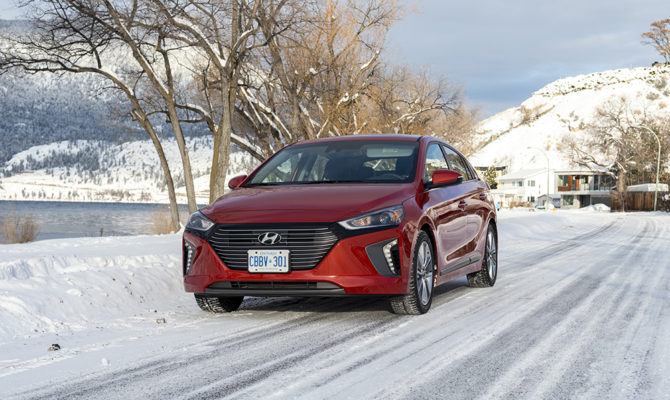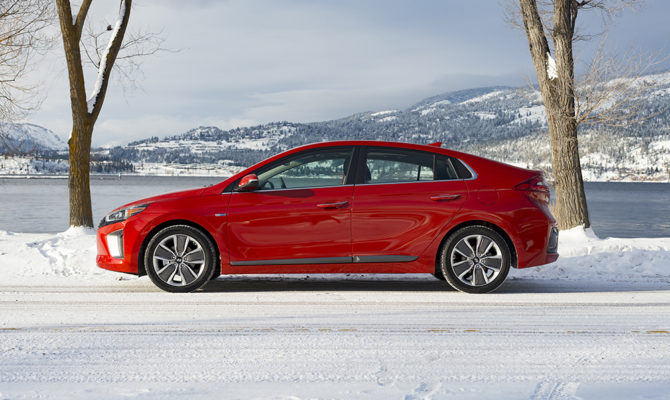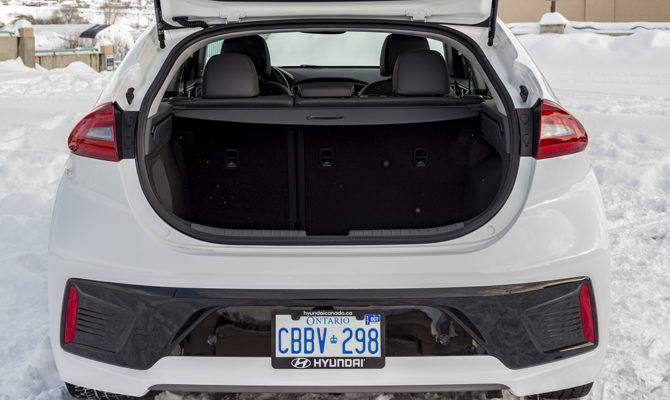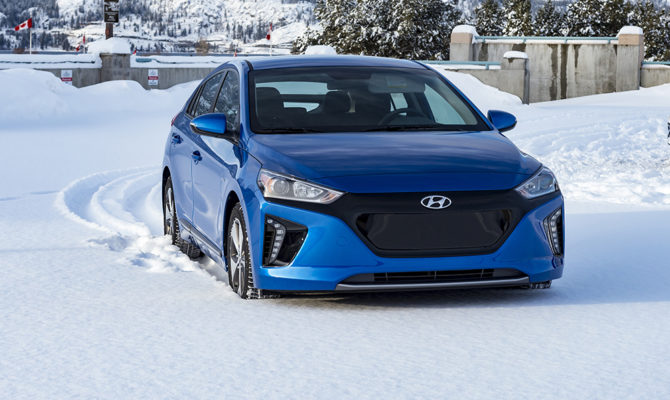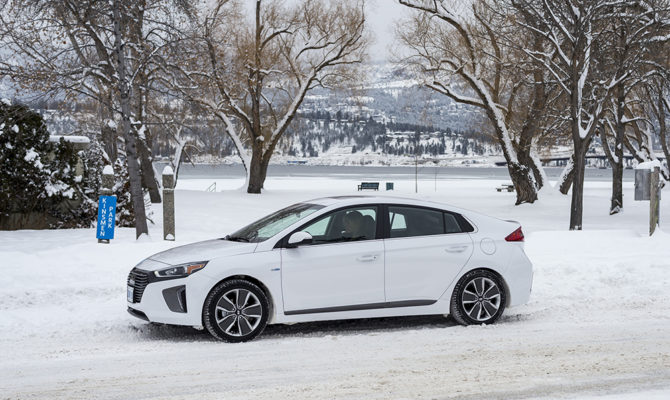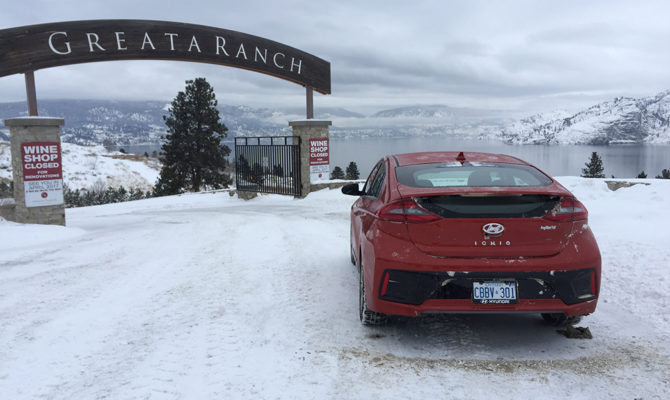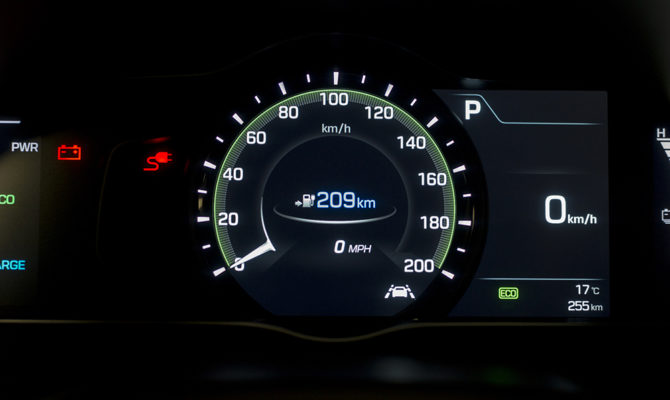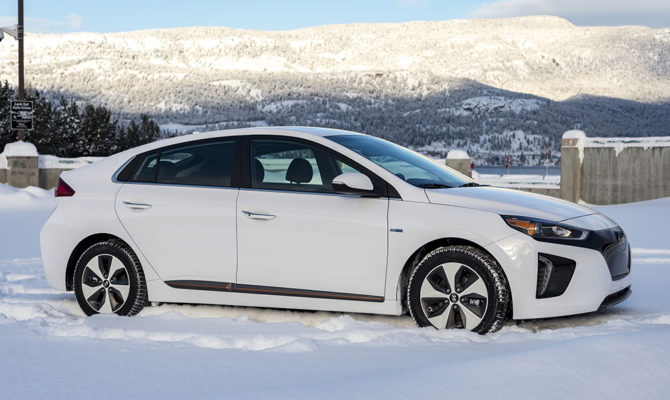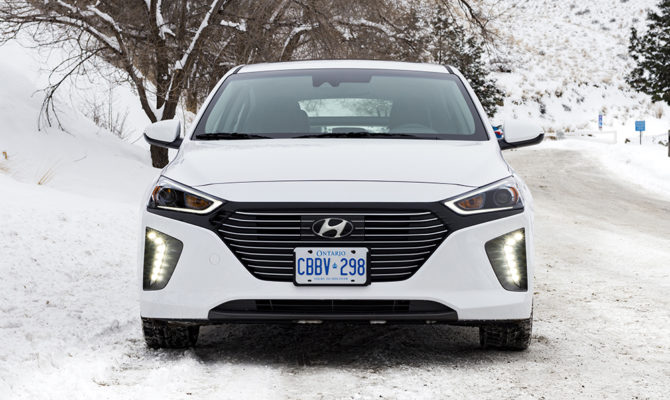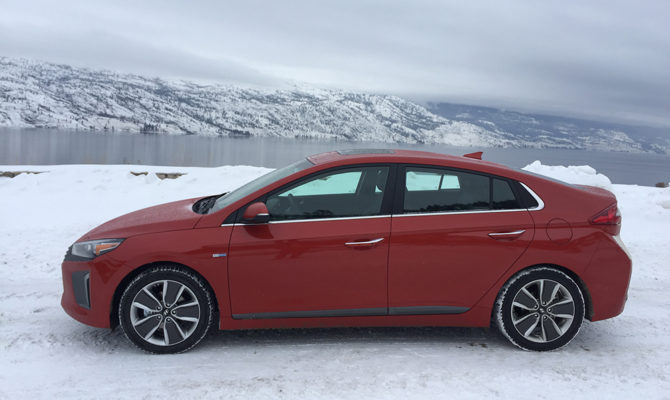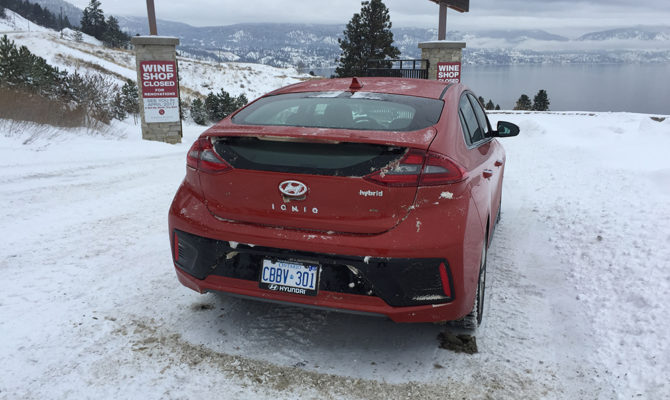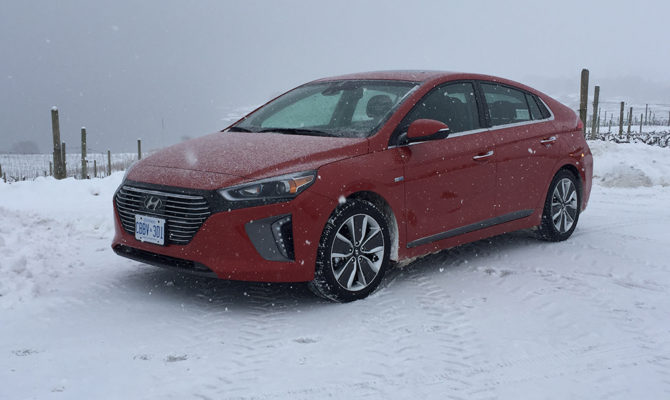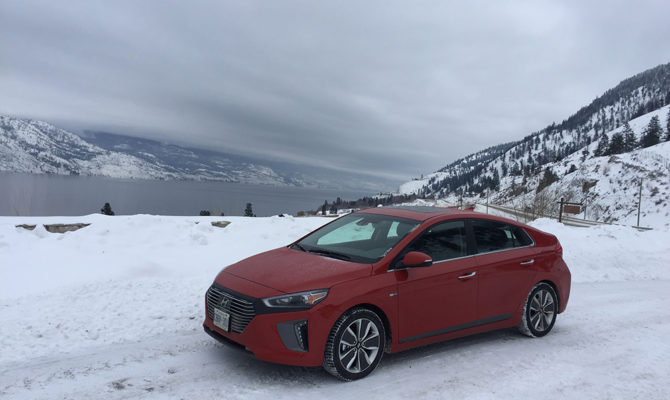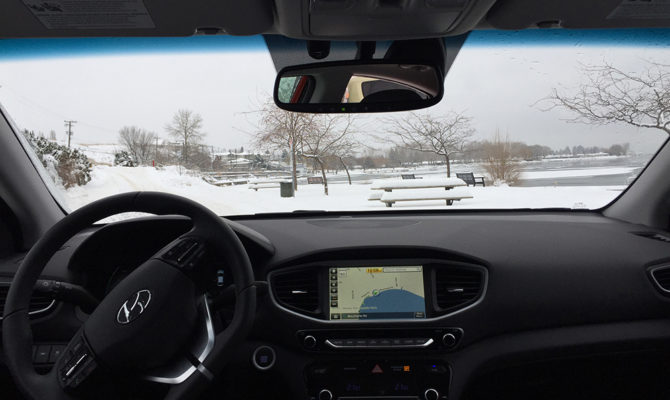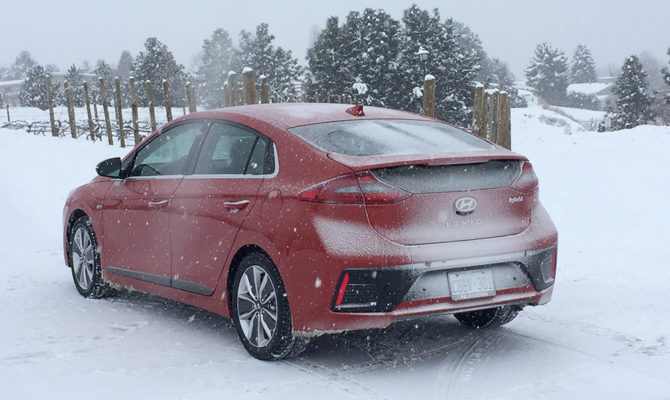“The Hyundai folks gritted their teeth as the snowflakes swirled but they were smiling by the time the event wound down.”
Kelowna, BC – The last place to show off a new line of electric and hybrid powered cars is somewhere deep in snow and ice.
Though significant improvements have been made in recent years but batteries still just don’t perform that well when temperatures plummet to sub-zero.
If you’ll pardon the pun, snow doubt somebody at Hyundai HQ figured the normally mild central Okanagan Valley would be perfect now to launch the new Ionic. Kelowna should have been emerging from the chill but instead the snow fell and winter tires had to be added to the lightweight, front-wheel drive sedans. The Hyundai folks gritted their teeth as the snowflakes swirled but they were smiling by the time the event wound down.
Nobody hurt, no damage done to their shiny new machines and seemingly favourable impressions were made on a cynical bunch of journalists from across Canada. The truth is, from a consumer point of view, the horrible conditions on Highway 97 to Penticton and the snow drifts on some of the hillside roads were perfect.
True, the range of the electric version was reduced from the expected 200 kms on a full charge as we cranked up the heat. But it performed exceedingly well otherwise and soon the novelty of driving an all-electric car wore off. The drive was not dissimilar to the one experienced during the morning spent at the wheel of the hybrid battery/gas version. Funny really, not long ago driving a hybrid was a novelty.
The name comes from a merging of Ion (electrically charged atom) and Unique. The range is the first to offer a choice of Hybrid, Plug-in Hybrid, and Electric Powertrains. The car was designed from the ground up to be a green machine in the way Toyota did with the original Prius. The designers could optimize it in every conceivable way to make it more efficient from aerodynamics to stowing the battery beneath the rear floor. And indeed, the latter is perhaps the feature that will be most appreciated – luggage uncompromised by battery positioning.
Initially, I was skeptical about the placement of steering wheel mounted paddles to control the level of regenerative braking. Normally, such paddles control the gear changes in a sporty transmission. It took me about five minutes to figure out how great it is and how it adds a new twist to driving an EV. The ability to control regeneration in stages from zero to 3, considering prevailing conditions in terms of traffic flow and terrain is literally at your fingertips.
An optional heat pump (for the more frigid parts of Canada, ha!) reduces electric consumption by 54 percent in frigid condition sand adds about 16 percent to the driving range. The estimated fuel consumption equivalency to gas powered cars is 1.7 litres per 100 kms. Its nearest rival, the new Chevy Bolt, is 1.9.
Honestly, I don’t pay much attention to what seems like voodoo math to me, comparing apples with oranges. But I understand why such boasts must be made. The fact is that electric cars are incredibly efficient is just a given. Debating where all the electricity is going to come from should we all turn electric is a debate for another day. Recharging is around 24 hours on a domestic power outlet but surely buyers are going to install faster charging systems – 4.5 hours.
No firm price yet but a base of around $33,000, maxing out at around $42,000 for a version loaded with all the techno bells and whistles. With a BC rebate of $5,000 that puts the base below that 30-grand barrier. And, if you trade in a banger, under the Scrap-It Program you will reduce the purchase by another $6,000.
Not much to say about the hybrid version, which is powered by the new Kappa 1.6-litre four-cylinder engine with gasoline direct injection (GDI) combined with a six-speed dual clutch transmission (DCT). It appeared perkier in performance than its rivals. Of more interest is the fact that the base Blue trim sets an impressive new fuel benchmark for hybrids of 4.1-litres gas consumption for 100 kms of travel.
Price will likely start at $24,000 rising to $33,000. No word on the plug-in version, which will show up later this year.
One thing you won’t notice is how Hyundai has cleverly consolidated the 12-volt battery function within the hybrid system. No shelling out for a replacement battery some time down the road.
The green commitment is not limited to propulsion. Eco-friendly and recycled materials feature throughout. Sugar cane accounts for 25 percent of the raw materials and recycled plastic combined with powdered wood and volcanic stone creates ‘natural’ plastic and reduces weight by 20 percent.
Recent Comments
- { Enjoyed your Forest of Bowland in the BMW X5M, particularly the photo of the BMW in front of the main part of Stonyhurst College where... }
- { Bantam designed the Jeep, not Willy's or Ford. The American military gave the original Bantam prototype to Willys and Ford to copy. There is plenty... }
- { All Escalades come with a 6.2-lilter V8 engine that produces 420 horsepower. A six-speed automatic is the only transmission offered and drives the rear wheels.... }
- { Alexandra is an excellent journalist. }
Popular Posts
- Journey to a ‘Sparkling’ Luxury Okanagan Resort “Four lucky readers will put a Dodge Journey’s weekend-...
- The Need For Speed: Hike Those Highway Limits More than half of those polled believe the province sho...
- Drives-U-Crazy… Erratic drivers. An early morning drive from Kelowna to Vancouver is nor...
- Readers Respond: The Pros and Cons of Increasing B.C. Speed Limits Increasing the speed limits will only increase risk to...
- Honda CR-V Review: The Compact Crossover To Get Things Done The CRV is a very stylish and aerodynamic crossover veh...


